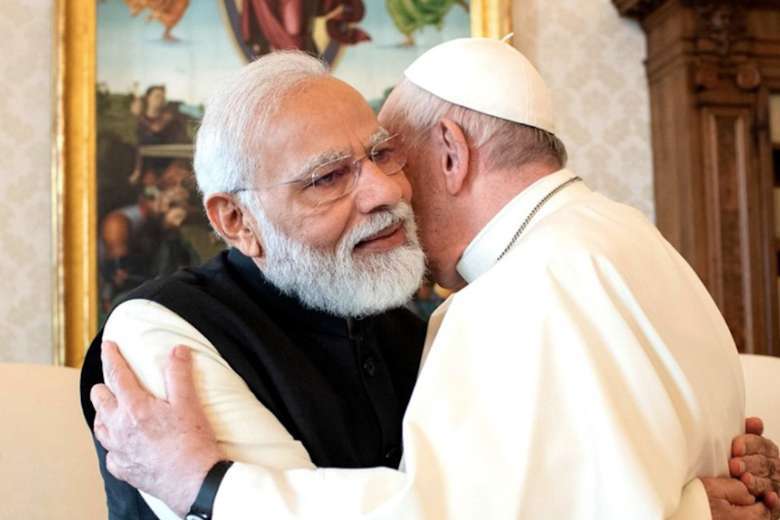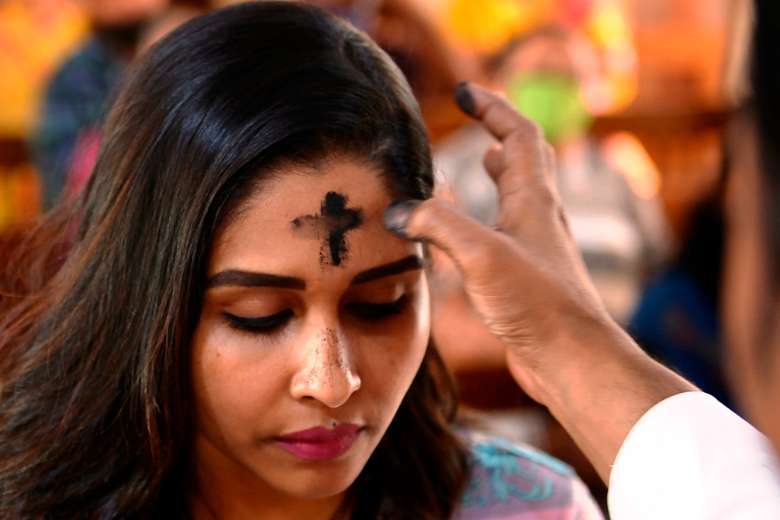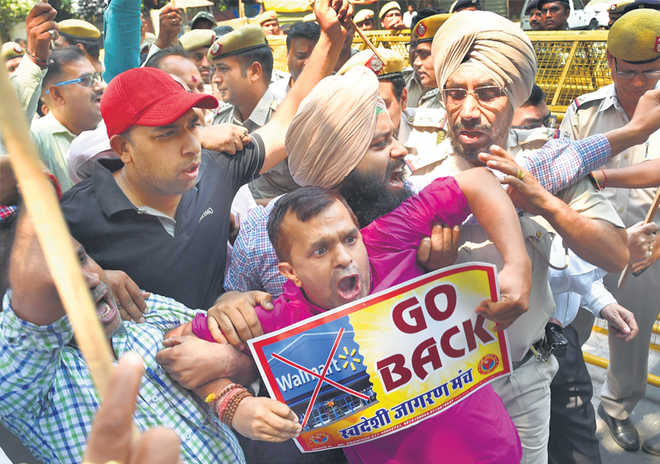The rise of ‘Godi Media’ in the U.S.!
(This article was originally published in the Indian Panorama) There is an urgent need for honest journalism to speak the truth to power in India and within the Diaspora. The primary function of journalism is to connect, inform and educate the public. Unless the media stands firm and refuses to be stifled and intimidated, there is very little hope in preserving freedom and justice and demanding accountability from power centers. The Indian ethnic press in the U.S. bears an even bigger responsibility in creating open space and helping to stop the spread of division and hatred within the community. Anything less would be tantamount to a total abdication of their moral responsibility to the public!” In a recent exchange with a leading publisher of an ethnic Indian newspaper, I inquired why he hasn’t carried a news item on the Indian Americans protesting before the United Nations where Prime Minister Modi was addressing the General Assembly. The answer came swiftly back in a query whether the demonstration was anti-India! I responded in kind, saying protesting Modi policies does not constitute taking an anti-India stand. Unfortunately, that is the sad reality that the ethnic Indian media has fallen into. A respected journalist recently told me that management chastised him for inviting
Modi’s embrace of Pope Francis is more optics than substance: John Dayal
Social media memes have captured the common mind more than the carefully clicked formal photographs showing Indian Prime Minister Narendra Modi embracing Pope Francis when the two met in the Vatican for a 55-minute meeting last week. The prime minister’s office and the captive media are hoping the photographs will portray the warmth of the Catholic pontiff for the visiting Indian premier, who is projected as the “Hindu Hridaya Samrat” or “Emperor who rules the heart of [Hindu] Indians.” The ruling Bharatiya Janata Party (BJP) in turn hopes the half a dozen colorful pictures will help sway Christian votes in the elections early next year to the state assemblies of Goa on the west coast and Manipur in the northeastern hills. Alas, the first of the two most viral memes splices an old photograph of Adolf Hitler with Pope Pius XII with the Modi-Francis visual, while the second shows the Indian premier in the vestments and mitre of a Catholic bishop. No captions were needed. In multilingual India, civil society activists wanted them to reach out far and wide. Other than in Kerala, whose hierarchy had been in the lead in failed negotiations over six years for a papal visit to India, the meeting
A pincer movement aims to stop the Christian mission in India. The states of Punjab and Karnataka mobilize to curb evangelical work:
JOHN DAYAL/ OPINION: Oct 19, 2021. It is a moot question which of the two October developments poses a more potent threat to the Christian mission in India, or at least in states other than Christian strongholds like Kerala, Meghalaya, Mizoram and Nagaland. The first development is a firman or diktat issued by Sikhism’s top body, the Shrimoni Gurudwara Prabhandhak Committee (SGPC), to curb Christian evangelical activities among the Sikhs in the northern state of Punjab. The SGPC has sent 150 teams, each comprising seven preachers, to scour the 12,729 villages in the state. This is ostensibly to extend their own pastoral care to the young in Sikh families so that they can resist temptations that may come their way. This is almost exactly what the Islamic Tabliqi Jamaat does among Muslims, and the Hindu groups such as Vishwa Hindu Parishad and Arya Samaj do among Hindus. Unexceptional, on the face of it. The second development is a decision by the pro-Hindu Bharatiya Janata Party (BJP) government in the southern state of Karnataka through its backward classes and minorities welfare committee to investigate “official and non-official” Christian missionaries. The state is expected to join nine other states that have passed laws against “forcible and fraudulent
From Amazon to Asset Monetisation, Policy Contradictions are Inherent in the Hindu Nationalist Ecosystem of Modi Government
If Amazon, with barely 2% of the retail market, can be called “East India Company 2.0”, how would one describe inviting foreign capital to buy into hitherto government monopolies?This piece was first published on The India Cable – a premium newsletter from The Wire & Galileo Ideas – and has been updated and republished here. To subscribe to The India Cable, click here. After accusing Infosys of working against Indian interests, the RSS-affiliated publication Panchjanya has described Amazon as “East India Company 2.0”, seeking a monopoly in Indian retail with “initiatives for seizing the economic, political and personal freedom of Indian citizens.” There are accusations that Amazon has spent $1.2 billion in legal fees or allegedly underhand payments to expand its Indian operations. The US authorities are ostensibly investigating. The Swadeshi Jagran Manch (SJM), affiliated to the RSS, has also argued that e-commerce giants like Amazon will hurt small traders and kirana stores in India. But the Reliance group and the Tatas are also in the same space (Jio Mart and Big Basket). The Tatas are tying up with Walmart to build a bigger e-commerce platform in India. If Amazon harms small kirana stores, so will Jio Mart, Big Basket and the
Pegasus scandal exposes Indian govt’s shameless corruption
IT IS NO LONGER THAT WINGED HORSE MOVING HEAVENWARDS BUT A ROTTEN SPY WEAPON HURTLING THE NATION TO DOOM Pegasus is in the news! No, not the immortal winged horse from Greek mythology or the one whose soaring flight was interpreted in ancient times as an allegory of the soul’s immortality. Pegasus in its latest avatar is far from the mythical creature of old or even the symbol of poetic inspiration in modern times. It is dangerous Israeli spyware and has become a metaphor for all that is rotten and corrupt in a country like India; of a government that can stoop to abysmal depths to spy on its own citizens, especially the voices of dissent who uphold justice and truth. The first "Snoopgate" scandal came to the limelight in late 2019 when it was discovered that the Pegasus spyware was used to hack into the phones of roughly 1,400 users around the world, including 21 Indians. The latest sensational revelations are far more serious, with the Indian government reportedly snooping on at least 300 prominent citizens including journalists, human rights activists, political opponents and even current and former government officials. Of far more concern is the targeting of lawyers, activists and academics connected with the










